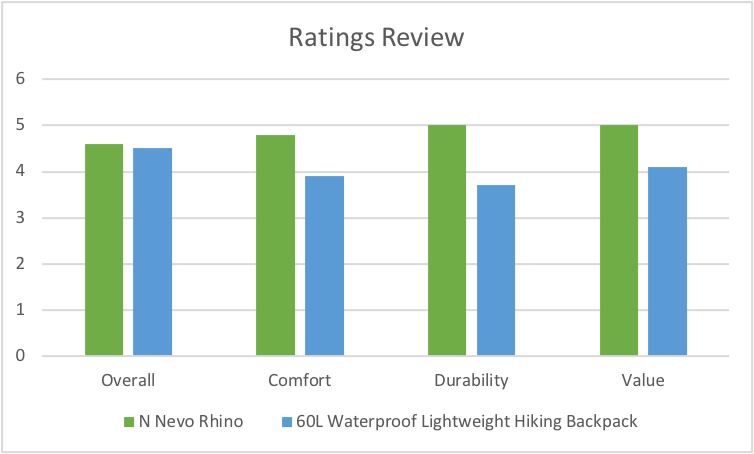New Year's Resolution - A Blog Series
Part 8: Worth your Weight in Salt.
By Retta Witter, Senior Consultant, J. Geiger Consulting, Inc.
In Ancient Rome, soldiers were sometimes paid in salt. This was important to them because it was the main technique for preserving food and adds a lot of flavor to food as well.
Last week you learned how I used surveys to get ideas on what other backpackers are doing and what is feasible. From the survey, I believe I can keep my base weight to under 20 lbs. This week I am going to look at what I can do get items lighter and warmer. The average temperatures for where I am hiking on the Lake Eleven segment are: high of 58 and low of 34 degrees fahrenheit. Currently the extended forecast has the temps at high of 64 and low of 40 degrees for the weekend.
My primary requirement is to keep my pack under 20 lbs. base weight. My secondary requirement is to be warm, unlike last time. Based on my MVP I believe there are two items I can look at to help me achieve those items, my backpack itself is 22% of my base weight at 4.5 lbs. As I am using my backpack more I am discovering I would like things a little different. My water bottle doesn’t fit well in the easily accessible pockets and I would like to make packing a little more organized feeling for me. The other item that will be important to staying warm is a quality sleeping bag or over quilt. I would like to see what my options are but I would also like to keep to a reasonable budget.
Today I will be using financial analysis to help me see if I can find a lighter backpack and a warmer sleeping bag and they must help me achieve my requirements of staying warm and under 20lbs.
Business analysts use financial analysis to formulate a recommended solution that is viable. There are several elements to consider when doing financial analysis.
Cost of Change
Total Cost of ownership
Value realization
Cost-Benefit Analysis
Financial Calculations
Financial Calculations
Return on Investment
Discount Rate
Present Value
Internal Rate of Return
“The art is not in making money, but in keeping it. ”
For my analysis, I will do a very basic financial analysis. I did research on Amazon and other websites to help me come up with solutions for different pack items and I got recommendations from friends on quality brands to look into. After doing some basic looking around I could spend a lot of money very easily trying to accomplish this goal, so I gave myself a budget I felt was reasonable on each product.
I found 6 backpacks that were in my price range, $50 to $100 prior to tax, that I wanted to look into collected the weight, cost, volume and other items like ratings to evaluate which one is my best option.
Based on my research my top three were N Nevo Rhino, Aveler and 60 L Waterproof backpacks. I ruled out the Aveler because it had less storage space, which I didn’t want to lose. That left the N Nevo Rhino and the 60L waterproof backpack. Based on the ratings especially around comfort I chose the N Nevo Rhino. The return on investment of a less durable items is also lower. My total cost of change will be $73.99 - $25 (estimated sale of current backpack on Facebook Marketplace) = $48.99. This will put my backpack at 17.5% of my base weight, a reduction of 4.5%.
I found six sleeping bags or over quilts that were in my price range, $100 to $200 prior to tax, that I wanted to investigate collected the weight, cost, temperature rating and other items like ratings to evaluate which one is my best option. While doing my research I didn’t lose much weight, but I think the temperature changes will help a lot.
Based on my research my top three contenders were the Featherstone, Outfoot Vitals down topquilt and the Revelation APEX custom. It was really close between the Featherstone and the Revelation APEX however the Revelation Apex was going to take four to six weeks to ship and that would be cutting it really close to my planned trip date.
Changing the sleep bag / top quilt I was able to get 15 degrees more comfort, in theory, than what I have currently and shave more than a ¼ lb. of weight.
Based on my new purchases he is a look at what my base packing looks like:
My absolute favorite financial analysis project was extra credit for my finance class to complete my MBA. I used NPV to determine which handed hockey stick I should use to reduce anticipated medical bills.
I am also looking at doing a financial analysis for my food. I am finding the premade meals are too much food and are costly for me, I have to hike out leftovers since I practice leave no trace. Identifying the cost of time to create them, dehydrate them, shop for the ingredients are part of what I am looking at, however what I need to consider as well is how many calories I am packing into my meals. Backpacking can burn, at my speed and goal pack weight, 200 calories per hour. So the 10 miles on day one I plan to hike at 1.5 miles per hour I am planning for will burn 1300 calories for the day.
What was your most telling financial analysis? Which options do you use?





